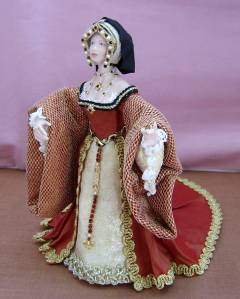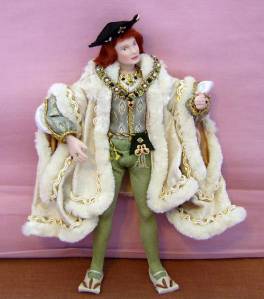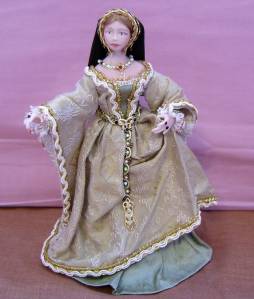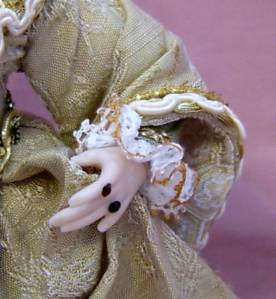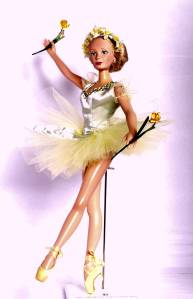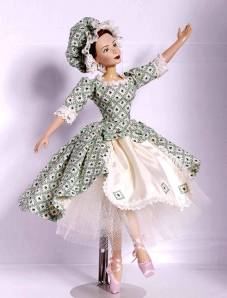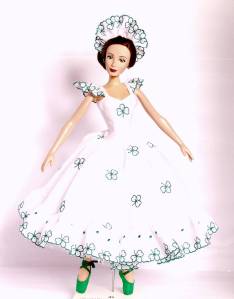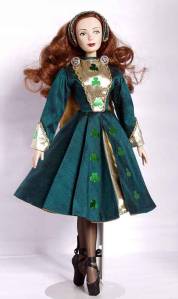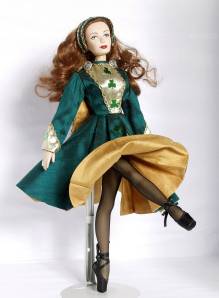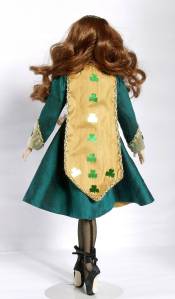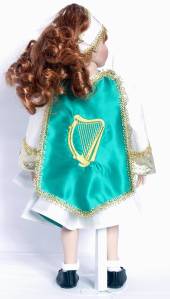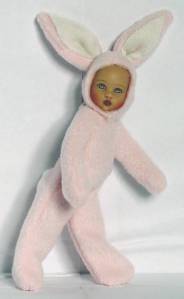Hello! As some of you might know, I have been gradually re-designing all the miniature dolls in my Henry VIII collection. I have also introduced two new dolls into this collection in the form of Young Henry VIII and Young Katherine of Aragon. Introduing new dolls or re-designing existing dolls can be a very slow process, as it has to be fitted around my every day doll orders and my order book is always very busy.
However, recently I was delighted to be given the chance to redesign Henry’s third wife, Jane Seymour, as an order. This was a wonderful chance to work on a character doll that tends to be far less popular than some of Henry’s other wives (such as Anne Boleyn for example!)
When redesigning an existing character doll like Jane I had to take into consideration how close to my original doll she needed to look to be identifiable alongside the other wives. I needed to see how much I could improve her over-all look, how acurate I was able to make her costume with the skills I have improved over the years and also to make sure that she was still attractive as a doll.
First of all, I wanted to make sure that I kept as close to the original colour scheme as I could, because in my mind, this was part of the doll’s identity. The original doll I made several years ago was based on a painting of the real Jane Seymour (below) and at the time, I decided to soften the main colour of the gown to make the doll less dark and more appealing as a doll.
As with the first version I made, I chose a doll with a pretty face. Many of the paintings of Henry’s wives are not the modern day idea of pretty or attractive. With a doll however, it is most important to have a face that will appeal to collectors……nobody wants to buy an unattractive doll! So I chose a doll with a pretty face and, very importantly for this costume, a lovely long neck to display that complicated head dress!Next was the choice of colour and fabric. The type of fabric was always going to be pure silk…..only the best is good enough for a Queen! With the colour, I decided that I would find a silk that as close as possible to the colour in the painting, without being ‘heavy’ or over-bearing on such a small doll. The use of contrasting fabric and trims would play a large part in the over-all look and success of this costume. In the end, I settled on a lovely two-tone silk in a pretty shade of pale brickdust teamed with and ivory and gold silk brocade, metallic gold net and a mixture of black and gold braids.
Once the underwear and shoes were on, I could move on to the skirt, false centre panel and bodice. At this stage, I had already constructed all the parts of the main costume and trimmed as much as I could.
You may have noticed that Jane has no arms at this stage. Sometimes with a miniature doll, the arms get in the way and it is easier to add them later. As some of you may know, the costume of the miniature doll (as opposed to a larger scale doll) is often full of illusions. On such a small doll it is of great importance to avoid as much bulk as possible in order to keep the line of the costume smooth, without lumps and bumps! So, first of all I secured a narrow frill of lace around Jane’s neckline. This would eventually give the illusion that she was wearing a lace-triimed shift underneath the gown as a real Tudor lady would. Once the lace was secure, the centre panel was secured into place, followed by the main skirt and then the bodice fitted and stitched into place. Front and back plackets were secured to the bodice front and back to give an authentic Tudor look.
Next came the intricate sleeves after giving Jane her arms at last! Lace cuffs were added to the doll’s wrists. These would look like the the frills from her (imaginary) shift. Then the gown sleeves were added in three parts: the upper main sleeve, the lower main sleeve and the fancy false under sleeve. The lower main sleeves were lined with gold net and folded back to reveal the padded gold silk brocade false under sleeves with their mock slashing edge. Here is Jane with arms and sleeves:
The next stage was to add her necklace and head dress. The necklace was made up of tiny faux pearls, filigrees and crystals, each individually applied. This is a very time-consuming (but enjoyable) job and requires much patience and precision to make sure each tiny item ends up in exactly the right place. Once the necklace was completely set, I could move on to the head dress.
Jane wears a short English Gable Coif with pinned up lappets and split veil, pinned up on one side. The English Gable Coif was originally seen at the end of the 1400’s with the lappets worn down and a full veil at the back. It gradually became shorter until it eventually went out of fashion in favour of the smaller crescent shaped French Hood. Below is a picture showing its longer form with Henry VIII’s mother Elizabeth of York.
Below is a picture of Henry’s first wife Katherine of Aragon in middle age wearing a slightly shorter version with the lappets pinned up but still a full veil at the back.
Below is a picture showing my new Jane’s Gable Coif. The main parts of the head dress was constructed in silk covered card. The lappets were made in silk brocade and secured to the top of the coif where they were then folded back onto the top of the coif and secured in place.
Next to be applied were the black silk veils and box back of the coif. The jewelled billaments were secured at the front before one of the veils was folded onto the top of the coif…….phew! Such a lot of work for such a tiny piece!
All that remained was the finishing, first with crystals, filigrees and pearls added to the centre front of the gown to form the jewelled belt.
Further decoration was then added to the mock slashing on the false under sleeves plus rings were added to Jane’s fingers.
Once everything was in place the last thing to do was to drape the front skirt and the back skirt train to make them look more realistic.
Jane Seymour was finally finished and ready to go to her new home. This was a hugely enjoyable project even though it took a long time but miniature dolls simply cannot be rushed.
Until next time.
Best wishes, Louise.






















